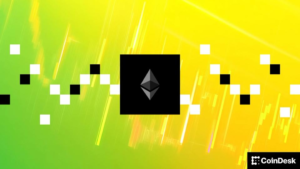Ethereum’s Ascendancy: Navigating the Fusaka Upgrade and the Future of Blockchain
Ethereum, while currently grappling with price fluctuations, is undergoing significant technological advancements that promise to redefine its operational efficiency. Behind the scenes, two parallel breakthroughs—a major protocol upgrade known as Fusaka and advancements in cryptographic methods—are priming Ethereum for a robust future. These innovations are designed to enhance participation for developers and users alike, promising a landscape where powerful computational resources are not a prerequisite for contributing to the network.
The Fusaka Upgrade: Enhancing Efficiency
Scheduled for December, the Fusaka upgrade represents a key milestone in Ethereum’s evolution. This hard fork amalgamates improvements to both Ethereum’s execution and consensus layers, aiming to optimize the network’s functioning rather than merely increasing its throughput. In contrast to the previous Dencun upgrade, which focused on scaling through the introduction of “blobs,” Fusaka is taking a more nuanced approach. The upgrade will implement 12 Ethereum Improvement Proposals (EIPs) to streamline validator workflows and enhance the efficiency of rollup data submissions.
At the heart of Fusaka is EIP-7594, also known as PeerDAS. This proposal enables validators to confirm data availability by sampling portions of rollup data rather than requiring them to download the entire dataset. Consequently, this strategic shift allows for a greater volume of rollup information to fit within each block, optimizing data handling without the need for increased node resource allocation. Moreover, the anticipated increase in gas limits—from 45 million to 60 million—will afford layer-2 solutions more freedom to process compressed transaction data. With successful early tests conducted on Holesky and Sepolia, the final testing phase on the Hoodi testnet is eagerly awaited.
Real-Time Proving: A Quantum Leap
While the Fusaka changes lay crucial groundwork, the most groundbreaking development is manifesting in a realm called proving. Ethereum scaling firm Brevis has introduced Pico Prism, a new zero-knowledge Ethereum Virtual Machine (zkEVM) that operates with remarkable speed. This prototype has achieved an impressive 99.9% real-time proving capability, generating full block proofs in under 12 seconds. This enhancement marks a substantial improvement from earlier iterations that could only verify 94% of blocks within the same timeframe.
According to Ethereum Foundation researcher Justin Drake, the new advances have effectively reduced average proof latency to just 6.9 seconds. This progression is pivotal as it aligns block verification with block production—a fundamental requirement for Ethereum’s overarching objective of achieving sub-second settlement. With the right resources, teams could potentially verify every layer-1 Ethereum block using a 16-GPU cluster that consumes under 10 kW, putting on-premise proving within reach and minimizing reliance on cloud solutions.
A Vision of Scalability
Drake envisions these developments as part of a scalable roadmap for Ethereum, termed “gigagas L1, teragas L2.” Under this framework, Ethereum’s base layer throughput for high-value activities could surge to an astounding 10,000 transactions per second (TPS). Even broader scalability enables the network to potentially reach 10 million TPS across its layer-2 solutions, ensuring it remains highly versatile for various use cases. Drake further posits that the increase in layer-1 throughput from its genesis—growing from 20 kilogas/sec to 2 megagas/sec—could manifest another 100x improvement with zkEVMs in a fraction of the previously required time.
The Dilemma of Technical Debt
As Ethereum makes strides towards faster and more cost-effective transactions, it faces a subtler challenge rooted in its “technical debt.” Developer Federico Carrone has raised flags about the stagnation of core development tools such as the Solidity programming language. Given that Solidity underpins over 86% of the smart contracts utilized across approximately $200 billion worth of DeFi protocols, this stagnation is particularly alarming.
Carrone posits that the ongoing maintenance of such intricate infrastructure demands time, continuity, and profound expertise—resources that cannot be amassed overnight. He expresses concern that the Fusaka upgrade’s proposed gas limit increase might pressurize execution clients which haven’t significantly improved, potentially impairing their performance when faced with larger blocks.
A Balancing Act for the Future
In navigating these complexities, Carrone warns that Ethereum’s technical debt is amplifying, exacerbated not only by essential protocol development but also by a plethora of dependencies and repositories that are languishing. As Ethereum continues to secure billions in assets while simultaneously scaling its ecosystem, certain foundational elements risk erosion, signaling a need for concerted efforts to mitigate the accumulated debt.
Ultimately, it is essential for Ethereum to address these underlying issues even as it accelerates its technological frontiers. Ensuring that core development tools keep pace with advancements and implementing effective strategies to manage technical debt will be crucial for sustaining momentum and maintaining Ethereum’s leadership in the blockchain arena.
Conclusion
In conclusion, Ethereum is poised for transformative changes propelled by the Fusaka upgrade and innovations in real-time cryptographic proving. These developments mark a deliberate move towards creating a more accessible and efficient blockchain ecosystem where participation is not limited to those with advanced technological capabilities. However, striking a balance between progress and the management of technical debt will be vital for Ethereum to realize its full potential. As the blockchain landscape evolves, Ethereum must continue to adapt, keeping both innovation and foundational stability in focus.

















